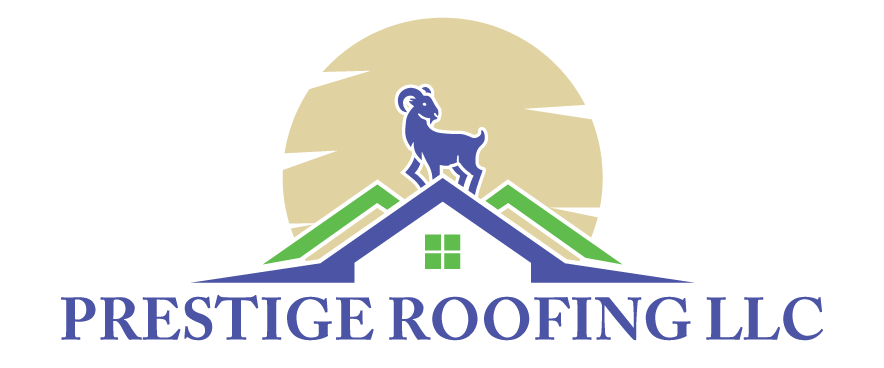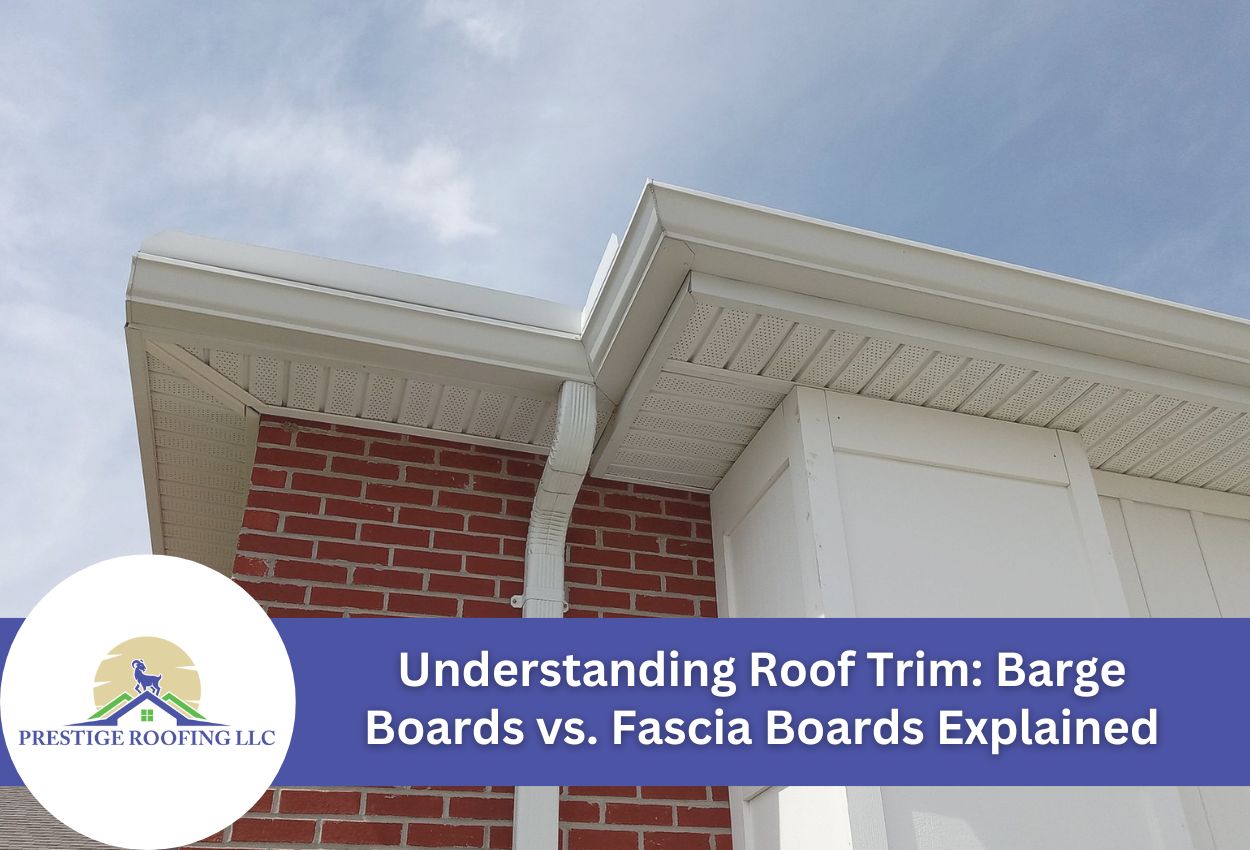When examining the exterior trim of a roof, two important components are often confused by Green Bay homeowners: barge boards and fascia boards. While both serve as protective and decorative elements of your roofing system, they have different roles in safeguarding your home against Wisconsin’s challenging weather patterns.
Fascia boards run parallel to your home’s walls, attached to the ends of rafters or trusses, creating a smooth, finished edge along the eaves. Barge boards, on the other hand, are installed along the gable ends of the roof, following the roof pitch and often featuring decorative elements that enhance your home’s architectural style.
Understanding the difference between barge boards and fascia boards is essential for any roof maintenance or replacement project. These components not only create a finished look for your roofline but also protect the roof structure from moisture, pests, and premature deterioration.
For Green Bay residents, where harsh winters and seasonal temperature fluctuations put extra stress on roofing systems, properly installed and maintained roof trim becomes even more critical. Correctly installed and cared for roof edge components can extend the lifespan of your entire roofing system while maintaining your home’s curb appeal and integrity.
What is a Fascia Board? Functions and Placement
Fascia boards are horizontal elements that run along the eaves of your roof, creating a finished appearance at the roofline. These boards serve as the mounting point for gutters and act as a barrier between the edge of your roof and the elements. Unlike barge boards that appear on gable ends, fascia boards attach directly to the ends of the roof rafters or trusses, forming a straight line parallel to the ground.
In Wisconsin homes, fascia boards typically measure between 1 and 2 inches thick and 4 to 8 inches wide, depending on the roof design and aesthetic preferences. Common materials for fascia boards include treated pine, cedar, redwood, composite materials, and aluminum. Each material offers different benefits in terms of durability against Green Bay’s snow, rain, and temperature fluctuations.
The primary functions of fascia boards are to protect the roof’s edge and the ends of rafters from water damage, prevent pests from accessing your attic space, and provide structural support for your gutter system. When comparing soffit and fascia board differences, remember that soffits cover the underside of the eaves while fascia creates the vertical face board at the edge of the roof. This distinction is important when planning ventilation and protection of your home.
What is a Barge Board? Purpose and Location
Barge boards, also known as verge boards, are distinctive trim elements installed along the gable ends of roofs where the roof edge slopes down to meet the sidewall. Unlike fascia boards that run horizontally along the eaves, barge boards follow the diagonal slope of the roof’s edge at the gable, creating a finished appearance while protecting vulnerable roof components. These boards are particularly important in Green Bay homes where winter winds can otherwise damage exposed roof edges.
There are two main purposes of barge boards. First, they serve a protective function by shielding the roof edge and underlying structure from wind uplift, moisture, and pest intrusion. Second, they provide aesthetic value, often featuring decorative cuts, scrollwork, or ornamental details that enhance your home’s architectural character and curb appeal.
In roof barge board vs. fascia trim comparisons, the main difference is their placement and orientation. While fascia boards support gutters along horizontal roof edges, barge boards typically don’t interface with gutter systems. Barge board installation requires precise angle cutting to match the roof pitch, whereas fascia installation follows a level horizontal line. For Green Bay homeowners, properly installed barge boards can prevent wind-driven rain and snow from penetrating vulnerable gable ends, ultimately extending the lifespan of your entire roofing system.
Key Structural Differences Between Barge and Fascia Boards
The architectural distinctions between barge and fascia boards go beyond their placement. Fascia boards work as part of an integrated system, connecting directly with soffits underneath and supporting gutters above. This integration creates a complete moisture management system along the horizontal roof edges. In contrast, barge boards typically stand alone at gable ends without gutter attachment, focusing primarily on protecting and decorating the angled roof edges.
These differences affect how each board interacts with other roofing components. Fascia boards mount directly to rafter tails or truss ends, creating a straight edge that serves as the anchor point for the entire gutter system. Proper fascia installation ensures water flows correctly into gutters rather than behind them. Barge boards, however, attach to the roof decking and rafter ends at gable edges, often extending slightly beyond the roofline to provide enhanced weather protection and decorative appeal.
Understanding the different parts of your roof is important when planning repairs or replacements. In Green Bay homes, where snow and ice buildup is common, fascia creates essential support for gutters and ice dam prevention systems. Meanwhile, well-constructed barge boards protect vulnerable gable ends from our strong seasonal winds. A professional roofing contractor can ensure both components are correctly sized and installed to maintain your home’s structural integrity while complementing its architectural style.
Visual Impact: How Each Board Affects Your Home’s Appearance
When it comes to your home’s exterior, barge boards and fascia boards play significant roles in defining its overall aesthetic appeal. In Green Bay neighborhoods, where architectural styles range from historic Victorian to modern Craftsman, these roof trim elements contribute substantially to your home’s character and curb appeal.
Barge boards often feature decorative elements that showcase craftsmanship and enhance architectural details. These ornamental components can include scalloped edges, carved patterns, or intricate scrollwork that adds visual interest to your gable ends. In many of Green Bay’s historic districts, elaborately designed barge boards serve as distinctive period features that highlight a home’s vintage charm and craftsmanship.
Fascia boards, while typically more understated, create clean, straight lines that frame your roof and provide a finished appearance. The color and material choices for both barge and fascia boards impact your home’s exterior design. When these elements complement your siding, windows, and other exterior features, they create a harmonious overall look that enhances property value.
Many Wisconsin homeowners choose to coordinate their roof edge components with other exterior trim elements for a cohesive appearance. Whether you prefer the rustic warmth of natural wood, the low-maintenance benefits of vinyl, or the durability of metal fascia and barge boards, selecting materials that harmonize with your home’s architecture ensures these functional elements also contribute to your property’s beauty.
Roof Trim Maintenance Considerations for Wisconsin Homeowners
Protecting your barge and fascia boards from Green Bay’s seasonal challenges requires specific maintenance routines tailored to each board type. For fascia boards, which bear the brunt of water runoff, regular cleaning and inspection every spring and fall helps prevent moisture damage. Remove debris from gutters to prevent water backup against the fascia, and check for paint failure or wood rot, particularly after winter.
Barge boards face different challenges, especially from wind-driven precipitation and ice formation along gable edges. Apply sealants every few years to barge boards, paying special attention to end-grain areas where moisture absorption is highest. For homes near Lake Michigan, where humidity levels fluctuate dramatically, both board types benefit from breathable, high-quality paint that allows minor moisture to escape while blocking bulk water penetration.
Watch for signs of board deterioration, including discoloration, warping, cracking, or soft spots when pressed. Small areas of damage on either the barge board or fascia can often be repaired with epoxy fillers, but extensive deterioration typically requires complete replacement. When fascia boards show damage, inspect adjacent soffit areas because problems often spread between connected roof edge components. Addressing minor issues as soon as possible prevents structural damage to rafters and roof decking, particularly important in Wisconsin, where freeze-thaw cycles can rapidly accelerate damage progression.
Professional Roof Trim Installation Tips and Best Practices
Correctly installing both barge and fascia boards is essential for ensuring their long-term performance on Wisconsin homes. For fascia boards, professional installers recommend using stainless steel or hot-dipped galvanized nails that resist rust in our humid climate. These should be driven every 16 inches into the rafter ends to provide adequate support for gutters that need to manage Green Bay’s heavy spring rains and winter snowmelt.
When installing barge boards, experts suggest creating proper overlaps at corners and using flashing where boards meet the roofing materials to prevent water intrusion. Boards should be pre-primed on all sides before installation, with special attention to sealing end grains that are more vulnerable to moisture. For both board types, allowing an expansion gap between boards accommodates seasonal movement in Wisconsin’s fluctuating temperatures.
Consider contacting a professional roofing contractor if you notice warping, splitting, or soft spots in your boards or if your home needs comprehensive roofing updates. When selecting a Green Bay contractor for these projects, ask about their experience with various board materials, their approach to flashing and sealing, and how they integrate these components with your overall roofing system. Quality contractors will discuss how proper board installation affects ventilation, moisture management, and energy efficiency — all crucial considerations for Wisconsin homeowners facing extreme seasonal conditions.
Choose Prestige Roofing LLC for Expert Installation of Barge and Fascia Boards in Green Bay
Understanding the difference between barge boards and fascia boards can help homeowners maintain their property. In Green Bay, ensuring every part of your roof is properly installed can prevent future issues such as water damage and insulation problems. Prestige Roofing LLC specializes in the precise installation of both barge and fascia boards, ensuring they not only enhance the appearance of your home but also provide the necessary protection against the elements.
If you’re unsure about the condition of your roof’s barge or fascia boards or if you need help choosing the right materials and styles for your home, call Prestige Roofing LLC today at (920) 791-0414. Our experienced team is ready to help you with all your roofing needs, ensuring quality and satisfaction with every project.

